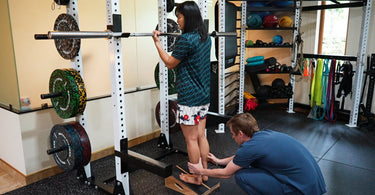Stepping into the ring isn't just about throwing punches; it's about understanding the risks and preparing for them. Boxing is a demanding sport that tests your physical and mental limits. While the thrill of the fight is unmatched, it's essential to be aware of the common injuries that can occur. Knowledge is power, and in this case, it can keep you fighting fit.
1. Hand and Wrist Injuries
Your hands are your primary weapons in boxing, making them susceptible to injuries.
-
Boxer's Fracture: A break in the neck of the fifth metacarpal, typically resulting from a misdirected punch.
-
Wrist Sprains: Caused by improper punching technique or inadequate wrist support.
Prevention Tips:
-
Always wrap your hands properly before training or sparring.
-
Use gloves that provide adequate wrist support.
-
Focus on proper punching technique to minimize strain.
2. Shoulder Injuries
The repetitive motion of throwing punches can take a toll on your shoulders.
-
Rotator Cuff Tendonitis: Inflammation of the shoulder tendons due to overuse.
-
Shoulder Dislocation: Occurs when the upper arm bone pops out of the shoulder socket, often from a powerful punch or awkward fall.
Prevention Tips:
-
Incorporate shoulder-strengthening exercises into your routine.
-
Ensure proper warm-up before intense training sessions.
-
Avoid overtraining and listen to your body's signals.
3. Facial Injuries
Aiming for the face is a common strategy in boxing, making facial injuries prevalent.
-
Cuts and Bruises: Result from direct hits, especially around the eyes and cheeks.
-
Nasal Fractures: A broken nose can occur from a straight punch landing squarely.
Prevention Tips:
-
Use headgear during sparring sessions.
-
Maintain a strong guard to protect your face.
-
Work on defensive techniques to evade punches.
4. Concussions
Repeated blows to the head can lead to concussions, a serious concern in boxing.
Symptoms:
-
Dizziness
-
Nausea
-
Blurred vision
-
Loss of consciousness
Prevention Tips:
-
Limit headshots during training.
-
Use protective headgear.
-
Ensure adequate rest between sessions to allow recovery.
5. Eye Injuries
The eyes are vulnerable targets in boxing.
-
Corneal Abrasions: Scratches on the eye surface from gloves or accidental pokes.
-
Detached Retina: A serious condition that can lead to vision loss if not treated promptly.
Prevention Tips:
-
Wear protective headgear with face shields.
-
Regularly check for any vision changes and consult a specialist if needed.
6. Rib and Chest Injuries
Body shots can be as damaging as headshots.
-
Bruised Ribs: Result from repeated blows to the torso.
-
Rib Fractures: Severe impacts can lead to broken ribs, causing significant pain and breathing difficulties.
Prevention Tips:
-
Strengthen core muscles to better absorb impacts.
-
Use body protectors during sparring.
7. Lower Limb Injuries
Footwork is crucial in boxing, but it also exposes the lower limbs to injuries.
-
Ankle Sprains: Caused by sudden twists or missteps.
-
Knee Injuries: Result from improper footwork or overextension during punches.
Prevention Tips:
-
Wear appropriate footwear that provides ankle support.
-
Incorporate agility drills to enhance footwork.
-
Stretch and warm up before training sessions.
Boxing is a demanding sport that requires dedication, technique, and awareness. Understanding common injuries and how to prevent them is essential for longevity in the ring. Equip yourself with the right gear and knowledge to stay safe and perform at your best.
For top-quality boxing equipment and gear, visit MuayThaiRoots.com. Train smart, stay protected, and keep your fighting spirit alive.





